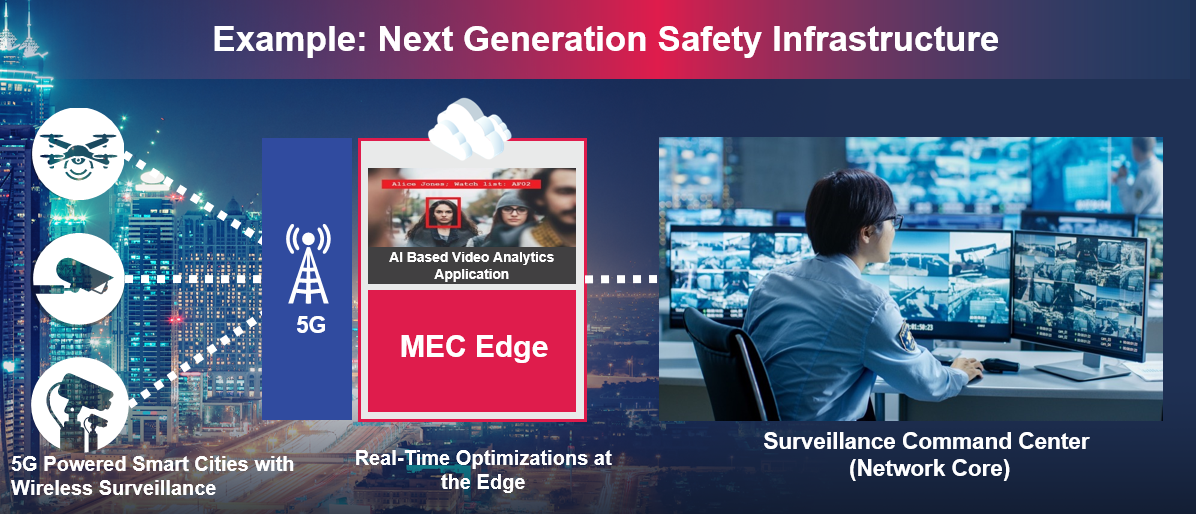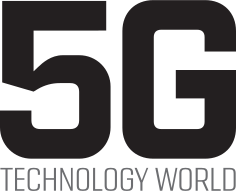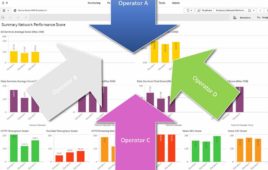Mobile operators are seeking to transform their networks to keep up with the demands of Industry 4.0 – as wireless connectivity requirements evolve from connected devices to connected everything – people, places, and things. Navigating the open source landscape can be a challenge as there are a number of open ecosystems that have emerged to help define how next-generation networks will be built to support 50+ billion connected devices and new 5G services and applications.
The Open Network Disruption
Traditional networks designed as monolithic networks lack flexibility to meet the demand of new applications, making any changes too costly and too time-consuming. Built with proprietary, single-sourced platforms from incumbent vendors that come with massive CapEx and OpEx costs, mobile operators are tied to a single supplier and can’t leverage components from new innovative players. This approach is no longer sustainable or scalable on the brink of the 4th Industrial Revolution. It is time to disrupt the status quo!
Open organizations such as the Open Networking Foundation (ONF) are delivering open reference architectures – such as CORD (Central Office Re-architected as a Datacenter) – that have been embraced by mobile operators in order to break vendor lock-in, reduce network complexity, lower costs, and accelerate service innovation. These open efforts are being driven by the mobile operator community with support from a multi-vendor ecosystem comprised of more nimble, agile vendors.
The O-RAN Alliance is one of the newer organizations on the scene, but it has quickly made an impact with its focus on openness and intelligence. The Alliance was launched one year ago during Mobile World Congress by global mobile operators, including AT&T, China Mobile, Deutsche Telekom, NTT DOCOMO, and Orange, and merged the efforts of the xRAN Forum and the C-RAN Alliance. Its goal is to evolve how radio access networks are built – embracing virtualized network elements, white-box hardware, and standardized “open” interfaces.
The Telecom Infra Project (TIP) is also focused on using open technologies to drive disruption in the telecom network to accelerate innovation and address high costs for traditional equipment. Its initial focus was on simplifying and disaggregating the RAN, and we may see more collaboration between TIP and the O-RAN Alliance to reach a common goal.
The Final Frontier for Open: The Radio Access Network
While overall mobile subscriber growth is slowing down, demand for more bandwidth – with 5G services and applications on the horizon – is changing the playing field. Mobile operators need to find new ways to drive revenues, ease network strain, and compete with new OTT companies.
To date, mobile operators have focused on implementing open technologies in the Mobile Packet Core, while the RAN has remained mostly untouched. Given that the RAN accounts for a large part of mobile operators’ CapEx and OpEx, it is ripe for the open network disruption. The traditional RAN architecture characterized by being proprietary, embedded, fixed, and integrated – resulting in high costs for the last mile. Due to these characteristics, the RAN is extremely difficult to realize “softwarization,” and is therefore the last area of the network to become open.
The New RAN Architecture – Disaggregated, Virtualized, Intelligent
The new RAN architecture is now being built on open principles to achieve the benefits of cloud scale economics and service agility.

Figure 1. The Shift to Next-Generation Open RAN Architecture
This evolution has multiple layers, from being able to use off-the-shelf hardware to designing software in a modular fashion to enable scale-out designs for capacity, reliability and availability. These attributes are a big source of OTT companies’ ability to build large scale yet cost effective clouds, and they are a primary driver for mobile operators to bring the same economics to the RAN.
At the same time, open interfaces are essential to enable smaller vendors and operators to introduce their own services, or to customize the network to suit their own unique needs. Open interfaces also enable multi-vendor deployments, enabling a more competitive and vibrant supplier ecosystem. Similarly, open source software and hardware reference designs enable faster, more democratic and permission-less innovation. Bringing in SDN and NFV efficiencies, the RAN is being disaggregated and virtualized, while becoming more flexible and programmable based on real world network conditions. By disaggregating the RAN into separate components, service providers will be able to swap components (baseband units, radio units, and remote radio heads) in and out from multiple vendors, reducing vendor lock-in and allowing them to choose from best-of-breed solutions to meet their specific network requirements.
In addition to open, the network also will need to get smarter to deal with the forthcoming onslaught of complexity driven by demanding 5G applications and increasing densification. As such, the O-RAN Alliance has made intelligence one of its core principles. It is implementing deep learning-based technologies to add intelligence to the new RAN architecture at both the component and network layers. Similar to how SON (Self-organizing Network) brought automation technology to make RAN management, planning, optimization and healing easier and faster, O-RAN will leverage deep learning to automate operational network functions, reduce OpEx and optimize efficiencies.
Supporting New Use Cases – Edge Computing and Network Slicing
Mobile operators are moving their networks closer to the edge in order to support new latency-sensitive 5G use cases for private networks, venues, dense urban environments, and more. The new open RAN architecture – that is software-defined, unbundled, programmable, and flexible – can support mobile operators’ latency requirements. Open RAN also supports 5G network slicing for specific use cases, enabling mobile operators to create multiple virtual networks from a single shared infrastructure to support specific use cases.
To support open at the Edge, The Linux Foundation recently launched LF Edge. This an umbrella organization that is developing an open and interoperable framework for edge computing. Projects under the umbrella include Akraino Edge Stack and EdgeX Foundry, among others. The Akraino Project is focused on developing an open software stack optimized for Edge computing applications. The first version of the Akraino stack, along with the supported blueprints, is expected to be available 1H-2019. The open source EdgeX Foundry project is focused on delivering a common open platform for IoT edge computing.

Figure 2: Open RAN Use Case: Next-Gen Safety Infrastructure
In the above example, mobile operators can deploy open RAN architecture to support edge network based highly scalable wireless surveillance at the edge, meeting requirements for enhanced mobile broadband and ultra-low latency.

Figure 3. Open RAN Use Case: RAN Aware Over-The-Air (OTA) Upgrade of Vehicle
The growth in autonomous vehicles serves as another prime example of where mobile operators can benefit from deploying an Open RAN architecture to accelerate innovation. In this example, mobile operators can save on firmware transport costs, while delivering higher reliability and policy enforcement to prevent upgrade failures.
Overcoming Integration Challenges
The main issue with disaggregation is aggregation. While the benefits of being able to leverage open RAN solutions (built from disaggregated components) are undeniable, mobile operators must also address the integration challenges of aggregating end-to-end interoperable solutions from a multi-vendor ecosystem. A recent survey of mobile operators by Heavy Reading on Open RAN showed that while breaking vendor lock-in is the primary reason that operators are considering Open RAN, the complexity of multi-vendor interoperable solutions is also the biggest challenge.
As stated earlier, mobile operators traditionally worked with a single supplier that delivered a complete network. These operators may not have the needed integration expertise in-house to build a network from a potential combination of open and proprietary components from multiple vendors, let alone be able to select the right set of building blocks for their specific requirements and use cases.
This opens up new opportunities for experienced systems integrators to deliver interoperable and verified solutions built with open white-box components that can scale. Mobile operators will need to rely on systems integration partners that can deliver solutions – built with best-of-breed hardware and software – that meet their specific requirements. These systems integrators will be able to help with 1) Identifying choices that map to each domain of the RAN architecture and the location of different components, 2) Providing software and hardware integration of those choices, and 3) Performing functional and performance testing, including scaling.
Moving Ahead
While the RAN is the last frontier for open network disruption, Open RAN deployments are already underway for 4G networks, and large-scale deployments are being planned for emerging 5G networks. Through disaggregation of the RAN into separate software and hardware components, mobile operators will be able to break vendor lock-in, reduce costs, and accelerate innovation to meet the demands of the 4th Industrial Revolution today.
Natasha Tamaskar, Vice President, Global Marketing and Sales Strategy, Radisys
Natasha heads corporate & product marketing and sales strategy for Radisys. Named last year as one of the Global Telecoms Business “50 Women to Watch,” Natasha brings nearly 20 years of telecom industry experience with particular expertise in product and corporate marketing, product strategy and business development for cloud, SDN/NFV, wireless and security solutions.




